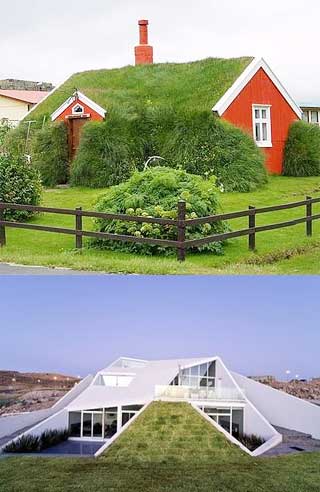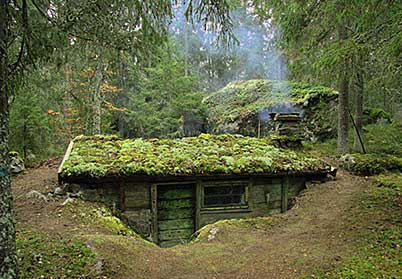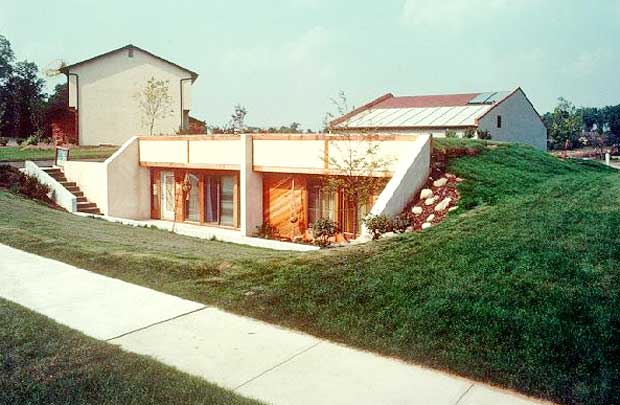Earth Berm Homes
In these economically challenging times more people are searching
for home designs that are stylish, affordable and remain energy
efficient. Earth Berming, or Earth Sheltering as it is also known,
is possibly the oldest and yet one of the lesser-known methods
of building.
 Earth Berm Homes
Earth Berm Homes |
|
Earth Berming essentially uses the earth around the home as your
insulation, helping to provide ambient and constant temperatures
in the building. The method involves piling earth around the external
walls of the building so that the earth provides protection from
the elements and saves energy for the owner.
As basic as this method sounds, the flexibility of the construction
materials leads to the possibility of creating a completely individual
dwelling. Despite a common preconception of dark cave-like living
areas, successful designs are light, airy and bright. There are
there different types of dwellings, each with its own inherent
advantages and disadvantages:
Earth Berming: This involves piling up the earth around
the external walls and sometimes the roof (at least to some extent).
The earth is packed down and slopes away from the building. The
obvious advantage here is that windows or doors can be put on
any side of the building.
In Hill Constructed: Just like the title suggests, the
dwelling is built into the side of a slope or hill. This form
involves the excavation of a site and generally means that the
opening to the building will be on one side. Therefore careful
consideration, particularly with regards to sun positioning, should
be put into which direction this opening for the building will
be. South-facing is the most advantageous since this will receive
sunlight all year long.
Underground/ Fully recessed Building: Underground
homes obviously need the most effort during the planning,
preparation and excavation. Water seepage is a particular concern
in this type of construction and special drainage techniques may
need to be utilized around the site principally around the roof
area.
|
Whichever method of Earth Berm construction
is decided on, each one will have its own advantages and
disadvantages depending on the personal factors behind the
development, for example using the building as a family
home, an office, a vacation retreat, etc.
|
 |
The obvious advantages of earth berm homes are the money saving
and energy savings aspects. Also, as the earth covers most or
the entire exterior of the building, berm homes require a lot
less exterior maintenance than more conventional houses. Earth
Berm houses are also less susceptible to the extreme outdoor weather
conditions. And since there are fewer entry points exposed, earth
berm houses are more secure when it comes to burglars and other
intruders.
The main potential disadvantage of earth berm homes include the
danger of water seepage into the building from the surrounding
earth, however routine maintenance will help to avoid this. The
other main disadvantage is that the materials used are normally
concrete and plastic and so they are not carbon neutral.

Conclusion
While the practice of constructing earth berm homes is not used
widely, there are a growing number of people interested in this
way of building and this is reflected in the growing number of
green building designs and construction companies now focused
on this business.
|

